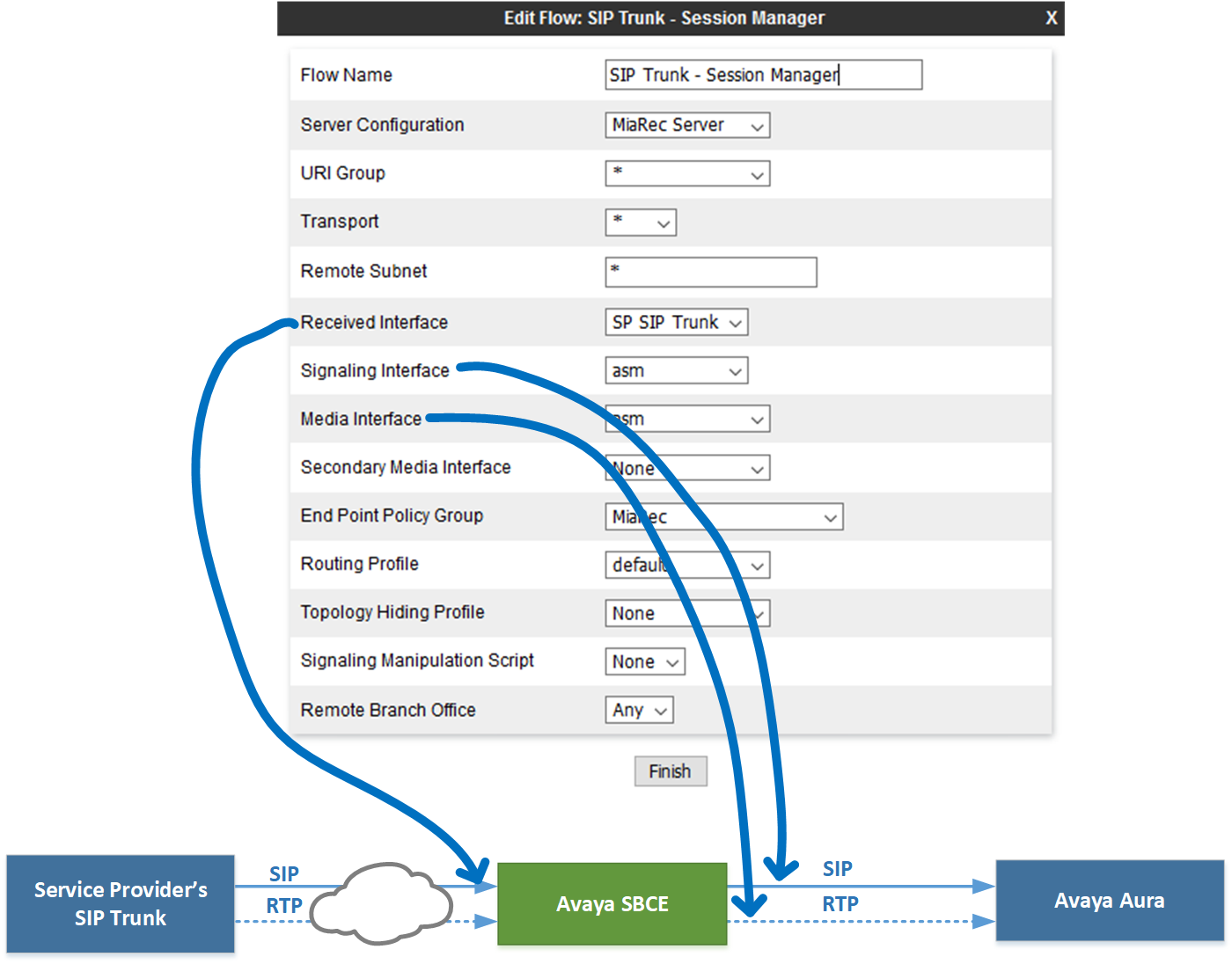11. Define Server Flows
The End Point Server Flows allow calls to be recorded by MiaRec when they are passing through Avaya SBCE to the Service Provider’s SIP Trunk. Navigate to Device Specific Setting -> End Point Flows -> Server Flows.
Create two Server Flows for MiaRec, one to record calls coming in from Service Provider’s SIP Trunking service and another for calls coming in from Session Manager.

Server flow 1. SIP Trunk -> Session Manager, i.e. inbound calls
Configure:
- In the Server Configuration field, select the one created in Step 3.
- In the Received Interface field, select the one used towards Service Provider for SIP Trunk.
- In the Signaling Interface field, select the one used towards Session Manager for SIP signaling.
- In the Media Interface field, select the one used towards Session Manager for RTP media.
- In the Endpoint Policy Group field, select the one created in Step 8.
- In the Routing Profile field, select default i.e. Routing profile without any IP address.
- In the Topology Hiding field, select None. The SBC will send the same information it sends to SM based on the TH set in the SM server flow.

Server flow 2. Session Manager -> SIP Trunk, i.e. outbound calls
This server flow is similar to the previous one, but for reverse call direction, outbound call through Service Provider's SIP Trunk. The Received Interface, Signaling Interface and Media Interface are reversed.
Configure:
- In the Server Configuration field, select the one created in Step 3.
- In the Received Interface field, select the one used towards Session Manager for SIP signaling.
- In the Signaling Interface field, select the one used towards Service Provider for SIP signaling.
- In the Media Interface field, select the one used towards Service Provider for RTP media.
- In the Endpoint Policy Group field, select the one created in Step 8.
- In the Routing Profile field, select default i.e. Routing profile without any IP address.
- In the Topology Hiding field, select None. The SBC will send the same information it sends to SM based on the TH set in the SM server flow.

Server flow 3. Remote worker calls.
If Remote Workers connect to SBCE via external network interface different from the Service Provider's SIP Trunk, then an additional server flow is required to record Remote Worker calls:
- In the Server Configuration field, select the one created in Step 3.
- In the Received Interface field, select the one used towards Remote Workers.
- In the Signaling Interface field, select the one used towards Session Manager for SIP signaling.
- In the Media Interface field, select the one used towards Session Manager for RTP media.
- In the Endpoint Policy Group field, select the one created in Step 8.
- In the Routing Profile field, select default i.e. Routing profile without any IP address.
- In the Topology Hiding field, select None. The SBC will send the same information it sends to SM based on the TH set in the SM server flow.